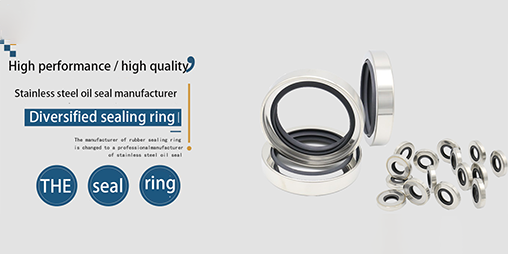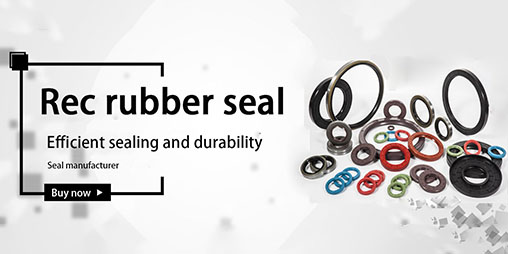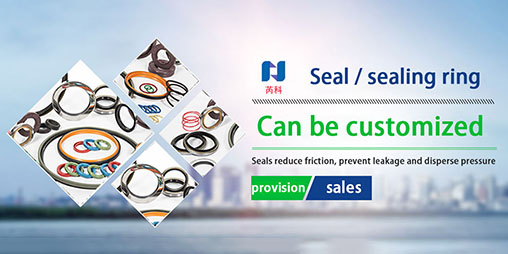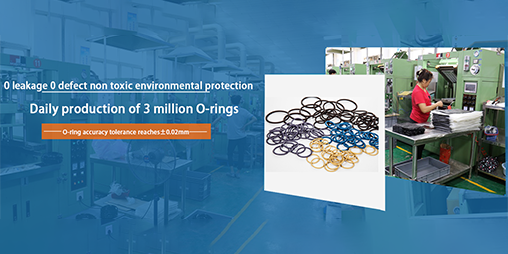Nitrile butadiene rubber is obtained from emulsion polymerization of butadiene and acrylonitrile. Nitrile rubber is mainly produced by low temperature emulsion polymerization. It has excellent oil resistance, high wear resistance, good heat resistance and strong adhesion. Its disadvantages are poor low temperature resistance, poor ozone resistance, poor insulation performance and slightly low elasticity. Nitrile rubber is mainly used to manufacture oil resistant rubber products. NBR is a synthetic rubber prepared by copolymerization of butadiene and acrylonitrile. It is a synthetic rubber with good oil resistance (especially alkane oil) and aging resistance. Acrylonitrile content (%) in nitrile rubber includes 42 ~ 46, 36 ~ 41, 31 ~ 35, 25 ~ 30 and 18 ~ 24. The higher the content of acrylonitrile, the better the oil resistance, but the cold resistance decreases accordingly. It can be used in air at 120 ℃ or oil at 150 ℃ for a long time. In addition, it also has good water resistance, air tightness and excellent bonding performance. It is widely used to make various oil resistant rubber products, a variety of oil resistant gaskets, gaskets, sleeves, flexible packaging, flexible hose, printing and dyeing rubber rollers, cable rubber materials, etc. it has become an essential elastic material in automobile, aviation, petroleum, copying and other industries.
Nitrile butadiene rubber is obtained from emulsion polymerization of butadiene and acrylonitrile. Nitrile rubber is mainly produced by low temperature emulsion polymerization. It has excellent oil resistance, high wear resistance, good heat resistance and strong adhesion. Its disadvantages are poor low temperature resistance, poor ozone resistance, poor insulation performance and slightly low elasticity. Nitrile rubber is mainly used to manufacture oil resistant rubber products. NBR is a synthetic rubber prepared by copolymerization of butadiene and acrylonitrile. It is a synthetic rubber with good oil resistance (especially alkane oil) and aging resistance. Acrylonitrile content (%) in nitrile rubber includes 42 ~ 46, 36 ~ 41, 31 ~ 35, 25 ~ 30 and 18 ~ 24. The higher the content of acrylonitrile, the better the oil resistance, but the cold resistance decreases accordingly. It can be used in air at 120 ℃ or oil at 150 ℃ for a long time. In addition, it also has good water resistance, air tightness and excellent bonding performance. It is widely used to make various oil resistant rubber products, a variety of oil resistant gaskets, gaskets, sleeves, flexible packaging, flexible hose, printing and dyeing rubber rollers, cable rubber materials, etc. it has become an essential elastic material in automobile, aviation, petroleum, copying and other industries.
基本信息
| 目录 |
|---|
折叠编辑本段基本简介
折叠
性能
Nitrile butadiene rubber is obtained from emulsion polymerization of butadiene and acrylonitrile. Nitrile rubber is mainly produced by low temperature emulsion polymerization. It has excellent oil resistance, high wear resistance, good heat resistance and strong adhesion. Its disadvantages are poor low temperature resistance, poor ozone resistance, poor insulation performance and slightly low elasticity. Nitrile rubber is mainly used to manufacture oil resistant rubber products. NBR is a synthetic rubber prepared by copolymerization of butadiene and acrylonitrile. It is a synthetic rubber with good oil resistance (especially alkane oil) and aging resistance. Acrylonitrile content (%) in nitrile rubber includes 42 ~ 46, 36 ~ 41, 31 ~ 35, 25 ~ 30 and 18 ~ 24. The higher the content of acrylonitrile, the better the oil resistance, but the cold resistance decreases accordingly. It can be used in air at 120 ℃ or oil at 150 ℃ for a long time. In addition, it also has good water resistance, air tightness and excellent bonding performance. It is widely used to make various oil resistant rubber products, a variety of oil resistant gaskets, gaskets, sleeves, flexible packaging, flexible hose, printing and dyeing rubber rollers, cable rubber materials, etc. it has become an essential elastic material in automobile, aviation, petroleum, copying and other industries.
折叠
折叠
NBR性能
折叠基本性能
Nitrile butadiene rubber is obtained from emulsion polymerization of butadiene and acrylonitrile. Nitrile rubber is mainly produced by low temperature emulsion polymerization. It has excellent oil resistance, high wear resistance, good heat resistance and strong adhesion. Its disadvantages are poor low temperature resistance, poor ozone resistance, poor insulation performance and slightly low elasticity. Nitrile rubber is mainly used to manufacture oil resistant rubber products. NBR is a synthetic rubber prepared by copolymerization of butadiene and acrylonitrile. It is a synthetic rubber with good oil resistance (especially alkane oil) and aging resistance. Acrylonitrile content (%) in nitrile rubber includes 42 ~ 46, 36 ~ 41, 31 ~ 35, 25 ~ 30 and 18 ~ 24. The higher the content of acrylonitrile, the better the oil resistance, but the cold resistance decreases accordingly. It can be used in air at 120 ℃ or oil at 150 ℃ for a long time. In addition, it also has good water resistance, air tightness and excellent bonding performance. It is widely used to make various oil resistant rubber products, a variety of oil resistant gaskets, gaskets, sleeves, flexible packaging, flexible hose, printing and dyeing rubber rollers, cable rubber materials, etc. it has become an essential elastic material in automobile, aviation, petroleum, copying and other industries.
折叠一般性能
With the increase of ACN content, the polarity of NBR increases, the chain flexibility decreases, the inter chain interaction increases, the double bond content in the molecular chain decreases and the saturation degree increases, which also leads to a series of performance changes, the oil resistance, air tightness and wear resistance are improved, while the processability and cold resistance are decreased. Therefore, NBR with appropriate ACN content should be selected according to the type and service condition of nitrile rubber sample [7]. Relationship between properties of nitrile rubber and ACN content.
折叠
质量指标
|
指标名称 |
NBR1704 |
NBR2707 |
NBR3604 |
NBR3606 |
N230S |
N240S |
|
结合丙烯腈的质量分数/% |
17~20 |
27~30 |
36~40 |
36~40 |
33.5~36.5 |
24.5~27.5 |
|
挥发分/%≤ |
1.0 |
1.0 |
1.0 |
1.0 |
0.75 |
0.75 |
|
灰分/%≤ |
1.5 |
1.5 |
1.5 |
1.5 |
- |
- |
|
防老剂D/%≥ |
1.0 |
1.0 |
1.0 |
1.0 |
- |
- |
|
拉伸强度/MPa≥ |
24.5 |
27.5 |
29.4 |
29.4 |
20.1 |
18.7 |
|
永久变形/%≤ |
17 |
28 |
30 |
30 |
- |
- |
|
溶胀率/%≤ |
70 |
38 |
20 |
20 |
- |
- |
折叠
并用
折叠
发展分析
折叠状况
折叠
制作加工
折叠制作
折叠加工
4.硫化
丁腈橡胶硫化曲线平坦,硫化速度比天然橡胶慢,工业上丁腈橡胶制品的硫化温度一般为149-171t,但有时为了提高产量,缩短硫化周期,也可采用204℃以上的硫化温度。丁腈橡胶采用80-10℃的低温硫化时,硫化胶的强力可达2MPa,但硫化胶耐水性能和耐热性能不好,如果发生欠硫,则压缩变形严重,耐油性能低劣,这一硫化工艺一般不采用。










